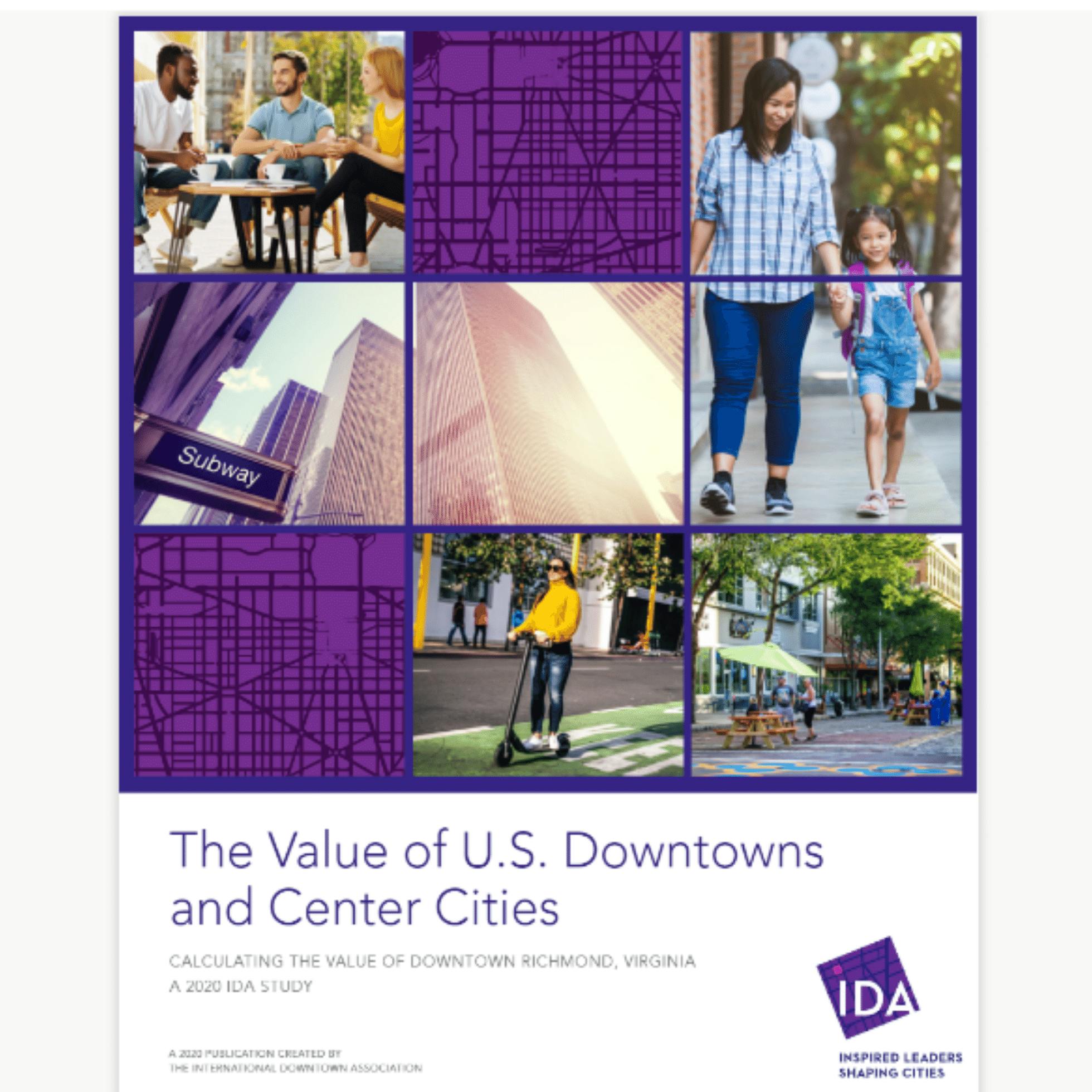
Richmond’s downtown is home to more than half the city’s jobs, it has absorbed nearly half of the city’s population growth over the last two decades, and it represents 35% of the city’s total assessed property value, all on less than 5% of the city’s total land area. A study by the International Downtown Association, and recently reported by Venture Richmond, offered this and other insights.
“Downtown has a remarkable concentration of the city’s real estate and cultural assets and has been a growth driver for the City’s transformation. It has also had a significant impact on the image of the entire Region,” said Lucy Meade, Venture Richmond’s director of economic development and community relations.
As part of Venture Richmond’s Annual Community Update, David Downey, President and CEO of the International Downtown Association, provided insights into how downtown Richmond is well-equipped to rebound from the financial challenges stemming from the pandemic while sharing a new study examining the value of Richmond’s downtown. Various generations – from Generation Z to older populations – continue to have a high demand for the downtown experience, according to Downey. He noted that Richmond’s strong housing market, walkability, quality open spaces, and diversity scores, particularly in downtown, are positive indicators for the future. “Downtown Richmond continues to drive economic value, creativity and innovation for the entire region,” Downey said. With the COVID-19 vaccine distribution continuing, Downey emphasized the need for companies to create productive and efficient plans for returning to the office to address the potential loss of innovation, creativity and collaboration when working virtually.
During the event, Downey also shared takeaways from The Value of Downtowns and Center Cities, a report that quantifies the value of U.S. downtowns across more than 150 metrics under five core value principles with a focus on how downtowns contribute to the city and region around them. From 2017-2020, the IDA analyzed a total of 37 downtowns and center cities across the country. The pre-COVID study finds that not only does Richmond’s downtown account for a significant proportion of the region’s jobs, but the city’s core experienced the region’s biggest percentage spike in residential population growth since 2000.
Jobs
- Richmond’s downtown accounted for more than half (53%) of the city’s jobs (77,465 out of 147,251) compared to the average of 40% for other “established Downtowns” in the study. Richmond leads the list of “established downtowns” with 63% of the City’s knowledge industry jobs, which is relatively higher than Seattle (58%), Minneapolis (58%) and Miami (52%); compared to the average of 41% for other “established Downtowns.”
- The private sector employs 66% of jobs Downtown (50,910 jobs) and knowledge industry jobs account for 35,100 jobs.
- Workers in the city center are better educated, comparably. Two in five (39%) of downtown workers have at least a college degree vs. one in three (33%) workers citywide and 31% in the region.
Residential Population
- Downtown is young and educated. Today, 40% of our residents are between 18-24 and 30% of residents are between 25-34. The Downtown residential population is well educated with 57% having a bachelor’s degree or higher—up from 40% in 2010 and 40% are enrolled in college.
- Most impressive was the increase in residential units, soaring 71% since 2010. However, only 14% of downtown residents own their own homes, but the racial balance of homeowners in downtown is close to even: 51% white vs. 49% non-white.
Economy and Quality of Life
- Downtown is an entertainment and tourism destination with 70% of the citywide hotel rooms located Downtown - 16 properties with 2,581 rooms.
- According to the report, Richmond’s downtown has one fourth of the city’s retail businesses (478) and one-third of its restaurants and bars (252). Total annual downtown retail sales of $526 million represent 23% of the city’s retail sales. Non-Downtown residents account for 55% of that economic activity. The city center’s restaurants, bars and breweries generate a combined $221 million in annual sales, 89% of which come from non-residents.
- Downtown received a strong Walk Score of 94% and a Bike Score of 80% compared to other established Downtowns and an average Walk Score of 85% and Bike Score of 70%.
- The report found that downtown Richmond’s sustainable transportation numbers left room for improvement with 65% of Downtown residents commuting alone compared to 35% commuting to work using a sustainable form of transportation (i.e. do not drive to work alone).

